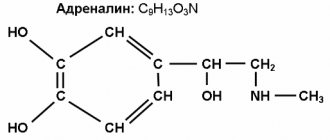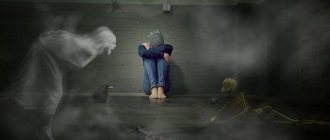Urticaria is a group of diseases (mainly of an allergic nature), the characteristic symptom of which is a rash on the skin in the form of red blisters.
In Russia, urticaria is very common - from 10 to 20% of the population have experienced its manifestations at least once in their lives. Moreover, in the majority it occurs in an acute form (70-75%), in the rest it takes a chronic course. WHO (World Health Organization) predicts that the 21st century will be the century of allergies. Every year the number of patients with one form of allergy or another increases by 5%.
Symptoms and mechanisms of development of urticaria
The appearance of the main symptoms of urticaria - blisters and redness - is associated with the mechanism of development of the disease. This is an increase in vascular permeability and acute swelling in the tissues that surround the vessels.
The mast cell plays a leading role in the development of urticaria. These are special immune cells, the granules of which contain special biologically active substances (mediators). The most studied of them is histamine. It is because of its action that the symptoms of urticaria arise - rashes, redness, swelling, itching.
A blistering rash appears suddenly on any part of the body, disappears quickly and without a trace within 24 hours, and then appears elsewhere. When you press on the center of the redness, a white spot is visible.
The itching begins at the same time as the rash. This is how histamine acts on nerve endings.
Depending on the factor that activated the release of histamine from mast cell granules, different types of urticaria are distinguished.
In children with urticaria, there may be a deterioration in their general condition: increased body temperature, disruption of the digestive system (diarrhea).
Causes of presyncope (why it occurs)
Let's first figure out what are the causes of presyncope. As mentioned above, a fainting state occurs due to the fact that the brain stops receiving the required amount of blood. But there are many other factors that can lead to this condition. The leading position among them is in intoxication of the body, which is caused by cancer and infectious diseases.
These include the following pathologies and diseases:
- intestinal infections of various etiologies;
- parasitic infection;
- thyroid diseases;
- viral hepatitis in acute or chronic form;
- hypotension;
- poisoning with chemical and toxic substances;
- various diseases of the cardiovascular system: arrhythmia, ischemic disease, heart failure.
The development of presyncope is promoted by dehydration, and pregnant women are often exposed to it. In these cases, an attack occurs due to insufficient blood volume necessary for normal functioning of the body.
There are other causes of fainting. These include: alcohol intoxication, tobacco addiction, congestion in the gallbladder, etc. The level of glucose in the blood is also one of the causes of pre-fainting. Since its increase or decrease can cause hypoglycemic fainting in a person. In this case, a complete examination of the pancreas is necessary, and consultation with a doctor regarding the necessary dietary therapy and level of physical activity. If these measures are taken on time, the development of such a serious disease as diabetes can be prevented.
Types of urticaria
There are several classifications of urticaria.
1. By time:
- acute – lasts up to 6 weeks;
- chronic – more than 6 weeks.
2. By nature:
- allergic (immune) - realized through the development of an immune reaction, often combined with other allergic diseases (bronchial asthma, rhinitis, conjunctivitis, dermatitis, etc.);
- non-allergic - through the direct release of histamine.
3. Due to:
— allergic urticaria
may cause:
- Food;
- taking medications;
- insect allergens (insect allergy);
- pollen allergens.
— non-allergic
form of the disease occurs due to a direct effect on the mast cell:
- physical factors - such as cold, heat, ultraviolet radiation, radiation, vibration, compression;
- chemical (provoking factors are solvents, acids, alkalis and other chemicals);
- certain medicines, such as aspirin;
- infectious agents - viruses (adenoviruses, Epstein-Bar virus, enteroviruses), streptococci, helminths, Helicobacter pylori;
- for systemic and other chronic diseases (rheumatoid arthritis, systemic lupus erythematosus);
- with a sharp increase in the level of histamine and other active substances in the blood due to the large consumption of foods high in them: eggplants, canned food, nuts, bananas, chocolate and others.
Hereditary, psychogenic, and idiopathic urticaria (this is the name for a disease whose cause has not been established) is also possible.
The wide variety of factors and similar developmental mechanisms of individual species make it difficult to find the cause. Most often, this requires the help of a specialist.
Signs and symptoms of presyncope: dizziness, nausea
Symptoms of presyncope are characterized by sudden development, which is usually provoked by certain factors. A stuffy room, tight clothing, stressful situations, excessive physical activity, eating - all this can contribute to the onset of an attack.
The most characteristic symptom of presyncope is dizziness, which may be accompanied by nausea. This indicates disturbances in the functioning of the human autonomic system.
There is a certain risk group of people for whom the presyncope may be permanent. These are people suffering from hypotension (low blood pressure), chronic anemia (low hemoglobin level in the blood, less than 100 units), bradycardia (low heart rate, less than 40 beats).
Any of the described signs is a serious reason to see a doctor. But, since an attack of pre-fainting can occur at any time and in any place, it is necessary to have at least a general understanding of how to provide first aid to the victim or yourself at home.
When and which doctor to contact
Usually a doctor is consulted:
- if the rash spreads over a large area;
- when symptoms increase;
- when signs of general intoxication occur;
- if the urticaria does not go away on its own after eliminating the factor that caused it;
- if the disease becomes chronic or often recurs,
It is advisable not to delay your visit to the doctor and come when the first manifestations of the disease occur. Then it will be easier to establish the cause, and treatment will take less time. In addition, the doctor will recommend what to do to prevent hives.
A therapist or pediatrician, a dermatologist can provide assistance with urticaria, and an allergist is involved in targeted diagnosis and treatment.
Diagnosis of urticaria in children
A preliminary diagnosis is made by the doctor after an initial examination of the skin.
The doctor knows exactly what urticaria looks like in a child, so he will not confuse it with manifestations of other diseases. For allergies, the following tests are prescribed:
- general blood test to exclude immune and inflammatory processes;
- allergy tests to identify the allergen.
In some situations, a biochemical blood test and examination for helminthic and parasitic diseases are performed. If necessary, a thyroid examination is prescribed to identify hyper- and hypothyroidism.
Diagnostic procedures for urticaria
Diagnosis of acute urticaria is usually quite simple. An examination and questioning of the patient about his medical history is sufficient. Finding out the reason is not so easy, and for this purpose additional research is carried out:
1. Laboratory tests:
- general blood and urine analysis;
- blood biochemistry (liver tests - ALT, AST, bilirubin, rheumatic tests, blood glucose);
- stool examination (coprogram);
- bacterial cultures from the nasal and pharyngeal mucosa.
2. Instrumental research:
- chest x-ray;
- Ultrasound of the abdominal organs;
- endoscopic examinations of the upper and lower gastrointestinal tract (gastroscopy, colonoscopy).
3. Allergy tests:
- intradermal tests with allergens;
- cold and heat tests;
- physical stress tests, line drawing, tourniquet application.
4. Immunological methods.
5. Consultations of related specialists:
- gastroenterologist;
- endocrinologist;
- rheumatologist;
- gynecologist and others as necessary.
First of all, it is important for a specialist to establish what nature the urticaria is – allergic or non-allergic. In the allergic form, one can clearly trace the connection between the symptoms and the introduction of the allergen. It is confirmed by skin, allergy and immunological tests.
Symptoms
Fungi on the skin provoke the production of histamine, which causes skin itching and pain. This in turn leads to scratching of the skin and a more severe course of the disease.
With seborrheic dermatitis, skin cells die en masse ahead of schedule, which leads to epithelial detachment and peeling of the skin. Unfavorable skin condition negatively affects the hair structure.
With seborrheic dermatitis, irregularly shaped foci of inflammation with flakes of keratinized cells are observed on the skin. Similar spots of fungus-affected skin can also be observed on the scalp. In severe cases of the disease, dense crusts form on the inflamed skin.
In the case of seborrheic dermatitis on the face, the skin between the eyebrows, in the area of the bridge of the nose, and nasolabial folds is affected. Small yellowish-pink papules merge and form inflammatory plaques covered with grayish-white or yellow greasy scales.
Seborrheic dermatitis has several clinical forms:
| Marginal blepharitis | Dermatitis affects the eyelids, which become yellow-pinkish in color and covered with pityriasis-like whitish scales. Patients complain of a burning sensation in the eyes, moderate itching, slight swelling and redness of the conjunctiva. They are also concerned about photophobia and lacrimation. |
| Seborrheic dermatitis of the external auditory canal | Its manifestations are similar to external otitis. Redness, peeling and itching appear in the area of the external auditory canal. Swelling and cracks are also observed behind the ears. |
| Patchy seborrheic dermatitis | It usually has a chronic course. The skin in the middle third of the forehead, eyebrows and scalp is affected. |
| Lichen asbestos | On the skin of the scalp there is an abundance of white crusts and scales that glue the hair together. When attempting to remove the scales, normal or reddened and swollen skin is exposed. |
What to do in case of a panic attack
The most important thing to do during a panic attack is to switch your attention. Any method is suitable for distraction. If an attack occurs in a public place, you can clench and unclench your fists, rub your earlobes, or shift from foot to foot. If panic takes you by surprise at home, try turning on music and starting to do household chores: washing dishes, dusting. Any activity that involves muscle work and requires attention is suitable.
Since a panic attack is accompanied by a rapid heartbeat and a feeling of stuffiness, it would be a good idea to take a couple of sips of water and concentrate on breathing. It is best to master several techniques that will quickly relieve tension. In case of an attack, start by exhaling - slow it down, and the pulse will also slow down. The ratio of the length of inhalation and exhalation should be 1:2. You can experiment and choose the technique that will help you. A smartphone can also help you take your mind off panic. Games, social networks - all this will shift attention and distract from a panic attack.
What is a panic attack
A panic attack is an attack of sudden fear and severe anxiety for no apparent reason.
The origins of panic disorder are not completely clear. However, it is believed that the disease has a genetic predisposition and more often affects the fair sex. Women are more prone to panic attacks and suffer from this disorder 2-3 times more often than men. Panic attacks cannot lead to death, despite the fact that this is the feeling that most often accompanies them. The more often attacks occur, the worse the quality of life becomes. People who have repeatedly experienced panic attacks become increasingly anxious and subconsciously try to avoid places or situations where and when they succumbed to fear. Those who have at least once experienced an attack at night subsequently experience sleep disorders.
How is normal anxiety different from a panic attack?
The mechanism that triggers a panic attack is no different from what causes ordinary anxiety - both are psychophysical reactions to danger. The difference is that a panic attack is a reaction to danger in the absence of danger. However, a false alarm triggers the same cascade of reactions as a normal alarm - the sympathetic system is activated, and adrenaline is released.
A panic attack can occur due to excessive physical activity, fatigue and exhaustion, as well as due to the abuse of stimulants and alcohol. In addition, stress and unresolved conflict situations can trigger an attack. A lack of understanding of one's own experiences and feelings, a tendency to avoid and ignore negative emotions also increase vulnerability to panic disorder.











